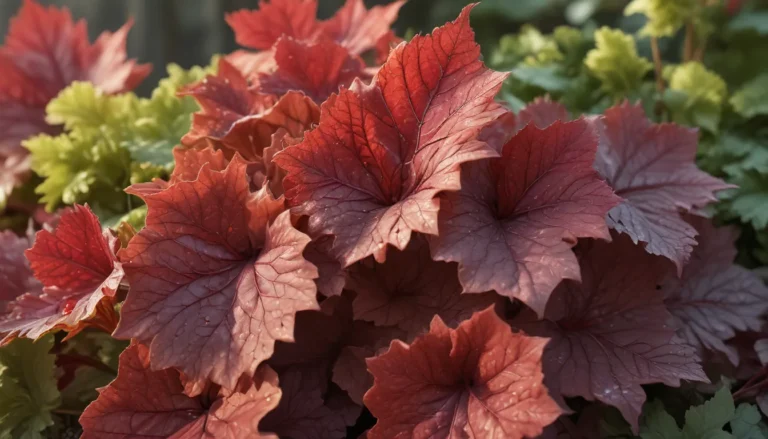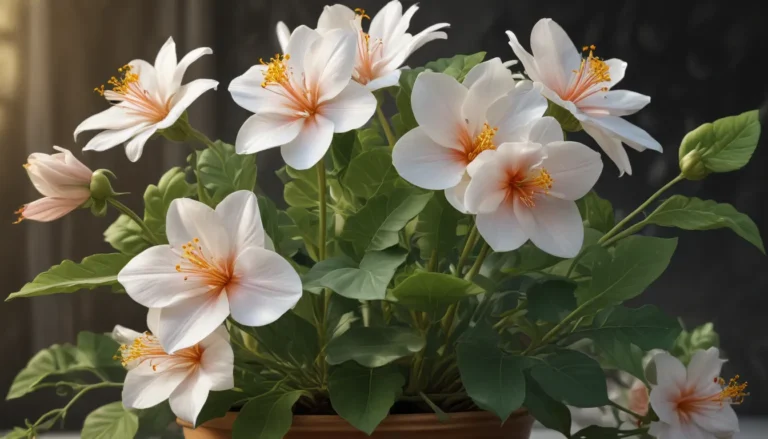The pictures we use in our articles might not show exactly what the words say. We choose these pictures to make you interested in reading more. The pictures work together with the words but don’t take their place. The words still tell you the important facts.
Cotinus, also known as smokebush or smoke tree, is a plant that exudes an air of mystery and elegance, making it a captivating addition to any garden or landscape. With its ethereal blooms and ever-changing foliage, Cotinus is a true gem in the botanical world. Let's dive into the enchanting world of Cotinus and uncover 16 fascinating facts that will leave you intrigued and amazed. Join us on this exciting journey as we explore the depths of this extraordinary plant and unravel its secrets.
Key Takeaways:
- Cotinus, or the smoke bush, is a versatile and easy-to-care-for plant that boasts vibrant foliage, unique flowers, and cultural significance.
- This plant can be grown as a shrub or a tree, adding beauty and visual interest to any outdoor space.
- Cotinus is prized for its ornamental value and is a favorite among butterflies, bees, and garden enthusiasts for its stunning colors and low maintenance requirements.
The Mystique of Cotinus Unveiled
Cotinus: A Plant of Many Names
Cotinus, commonly known as the smoke bush, is a genus of flowering plants within the Anacardiaceae family. Its name is derived from the distinctive smoky appearance of its flower clusters, adding an element of mystique to its allure.
Varieties of Cotinus
There are several species of Cotinus, each with its own unique characteristics. Cotinus coggygria, the European smoke bush, originates from southern Europe and central China, while Cotinus obovatus, the American smoke tree, hails from the southeastern United States.
Colorful Transformations
One of the most enchanting features of Cotinus is its ability to change leaf colors throughout the seasons. From lush greens in spring and summer to vibrant hues of red, orange, and purple in autumn, Cotinus puts on a stunning display of nature's artistry.
Exquisite Flower Clusters
Cotinus is renowned for its attractive, fluffy panicles of flowers that resemble puffs of smoke, lending the plant its unique charm. These delicate clusters are composed of tiny, feathery flowers that add to the plant's ethereal beauty.
Versatility in Landscaping
Whether as a shrub or a tree, Cotinus offers versatility in landscaping design. With the right pruning techniques, this plant can be shaped to suit various garden styles and preferences, serving as a focal point or an elegant backdrop in any outdoor setting.
The Allure of Cotinus in Gardens
Ornamental Value
Cotinus is highly prized for its ornamental value, thanks to its striking foliage, unique flower clusters, and vibrant autumn colors. Its presence in a garden adds beauty and visual interest, elevating the overall aesthetic appeal of the outdoor space.
Easy Care and Maintenance
Despite its enchanting appearance, Cotinus is a relatively low-maintenance plant that thrives in well-drained soil and can withstand a range of conditions. Once established, it is drought-tolerant and requires minimal pruning, making it an ideal choice for busy gardeners.
Historical Medicinal Uses
Throughout history, Cotinus has been revered for its medicinal properties, with various parts of the plant, such as leaves and bark, believed to possess antibacterial, antiviral, and anti-inflammatory properties. Its rich history in herbal medicine adds another layer of intrigue to this enigmatic plant.
Embracing Nature’s Bounty with Cotinus
Crafting with Cotinus Wood
The dense and durable wood of Cotinus is a popular choice for crafting, used in creating small crafts, inlay work, and tool handles. Its attractive grain and natural color make it a sought-after material for woodworking enthusiasts.
A Haven for Pollinators
The nectar-rich flowers of Cotinus attract a myriad of pollinators, including butterflies and bees, making it a haven for these beneficial insects. By supporting the ecosystem through pollination, Cotinus plays a vital role in maintaining biodiversity.
Cultural Significance
In folklore and traditions, Cotinus holds cultural significance, symbolizing love, protection, and purification in various cultures. Its use in rituals and ceremonies highlights its role as a symbol of positivity, energy, and spiritual cleansing.
Cultivating the Beauty of Cotinus
Propagation Methods
For those looking to cultivate their own slice of Cotinus paradise, propagation is possible through seeds or cuttings. Both methods offer successful ways to grow new plants and expand the charm of Cotinus in different garden settings.
Creative Expression with Cotinus Foliage
The vibrant leaves of Cotinus are not only visually striking but also lend themselves well to creative pursuits. From flower arrangements to crafts, these leaves add a touch of elegance and uniqueness to any design, inspiring creativity and artistry.
Longevity and Endurance
With the right care and conditions, Cotinus is a long-lived plant that can provide beauty and enjoyment for many years. Its enduring presence in the garden serves as a testament to its resilience and timeless appeal.
Unraveling the Enigma of Cotinus
In conclusion, Cotinus, the enigmatic Smokebush, is a plant that continues to captivate and intrigue with its unique qualities and rich history. From its stunning foliage and colorful transformations to its cultural significance and medicinal uses, Cotinus is a treasure trove of wonders waiting to be discovered.
Whether you're a seasoned gardener or a novice enthusiast, Cotinus offers a wealth of beauty and inspiration for all. Embrace the allure of this remarkable plant, take a moment to admire its beauty, and let its mysteries unfold before you. Cotinus is more than just a plant—it's a living work of art that continues to enchant and delight those who appreciate the beauty of nature.
FAQs
-
What is Cotinus?
Cotinus, also known as the Smokebush, is a genus of flowering plants characterized by its unique appearance and colorful foliage. -
How tall does Cotinus grow?
Cotinus plants can vary in height depending on the species and cultivar, with some reaching up to 30 feet or more. -
Can Cotinus thrive in different climates?
Yes, Cotinus is adaptable to various climates, making it a versatile plant for gardens worldwide. -
Are all Cotinus varieties deciduous?
Yes, all Cotinus varieties are deciduous, shedding their leaves during the winter season to showcase their vibrant autumn colors. -
How do you care for Cotinus plants?
Cotinus plants are generally low maintenance, preferring full sun to partial shade, well-draining soil, regular watering, and occasional pruning to maintain their shape.
As you embark on your journey of discovery with Cotinus, let the allure of this captivating plant inspire you to explore the wonders of the natural world. Each leaf, each flower, and each season holds a new mystery waiting to be unraveled, inviting you to delve deeper into the enchanting realm of botanical beauty. Embrace the magic of Cotinus and let its timeless charm infuse your garden with elegance and grace.
This engaging and informative rewrite highlights the captivating nature of Cotinus, offering valuable insights and knowledge for plant enthusiasts and nature lovers alike. By exploring the enigmatic qualities and fascinating facts about Cotinus, readers are invited to appreciate the beauty and wonder of this unique plant.






